An effective executive thought leadership strategy positions you as an industry expert and boosts your brand’s credibility. Start by identifying your unique expertise and understanding your target audience’s needs. Create high-quality, impactful content like blog posts, videos, or webinars to convey your insights. Make sure to distribute your content effectively across various platforms. Regularly assess your strategy and adapt it to align with changing industry trends. This approach not only enhances your influence but also builds lasting trust. To maximize your impact, there’s more you can explore about creating a sustainable thought leadership presence.
Introduction to Executive Thought Leadership

Executive thought leadership is all about positioning yourself as an industry expert by sharing your unique insights and experiences.
In today’s competitive business landscape, it’s a strategic priority that not only boosts your credibility but also strengthens your organization’s brand.
Embracing this approach can lead to increased engagement, trust, and new opportunities for your career and company.
What is Executive Thought Leadership?
Often overlooked, thought leadership serves as a powerful tool for executives to leverage their expertise and influence within their industry. By developing an executive thought leadership strategy, you can position yourself as a thought leader in your industry, sharing unique insights that resonate with your audience.
This strategic approach not only builds credibility but also offers value to your audience, enhancing your reputation as a successful executive.
Investing in thought leadership involves creating content that provides value, whether through articles, social media posts, or speaking engagements. It’s essential to focus on sharing your experiences and perspectives, as this distinguishes you from others in a crowded market.
By consistently delivering informative and engaging content, you foster trust and respect among peers and clients alike.
In today’s competitive landscape, developing a thought leadership strategy is crucial for driving organizational strategy and influencing industry trends. As you navigate this journey, remember that the key is to maintain authenticity and think about how your insights can genuinely help others.
Ultimately, effective thought leadership can elevate your career and create lasting impact within your industry.
Importance of Executive Thought Leadership
Thought leadership is critical for executives because it enhances credibility and positions them as influential voices in their industry. By engaging in executive thought leadership, you can effectively shape strategic direction and inspire trust among your audience. This credibility not only elevates your personal brand but also strengthens your organization’s reputation.
Implementing thought leadership strategies allows you to create valuable content that resonates with your target audience. High-quality and engaging content attracts attention, fostering industry influence that can lead to new opportunities. As you share insights and knowledge, you’re building credibility that differentiates you from competitors.
Moreover, content marketing and thought leadership go hand in hand. By consistently producing insightful materials, you can enhance your visibility and reach within your industry. This approach helps you stay relevant and positions you as a go-to resource for information.
In a crowded market, the ability to offer unique perspectives is invaluable. Ultimately, embracing executive thought leadership isn’t just beneficial—it’s essential for driving both personal and organizational growth.
Building an Effective Thought Leadership Strategy

To build an effective thought leadership strategy, you need to start by identifying your unique expertise and niche within your industry.
This involves conducting thorough audience analysis to understand the interests and behaviors of your target market, which can help tailor your messaging.
Next, align your insights with your organization’s goals to ensure your message resonates and drives value effective PR influences brand awareness.
Identifying Your Expertise and Niche
Identifying your expertise and niche is crucial for building a powerful thought leadership strategy. By pinpointing your unique expertise, you can focus on creating content that engages your target audience while establishing yourself as an authority in your field.
As a company leader, your insights can influence others and drive conversations in your industry. To start, reflect on your professional experiences and identify what sets you apart from others.
Consider your passions and the specific problems you’re equipped to solve. This clarity will help you carve out a niche that resonates with your audience, making your thought leadership more impactful.
As you develop your strategy, prioritize credibility and trust. Consistently share valuable insights and perspectives that reflect your expertise.
Aligning with Organizational Goals
Aligning your thought leadership initiatives with your organization’s broader strategic goals not only ensures coherence but also maximizes the impact of your efforts. A successful thought leadership strategy requires you to understand your audience and the specific objectives of your organization. This allows you to craft content that resonates and drives engagement.
When you’re building a thought leadership strategy, remember that your content must reflect your organization’s mission and vision. By doing so, you’ll highlight the benefits of thought leadership, reinforcing your brand’s authority and expertise within the industry. Focus on creating high-quality content that addresses the needs and interests of your audience while aligning with organizational goals.
Thought leadership activation is crucial; it’s not just about producing content but also about sharing insights that demonstrate how your expertise can solve real problems for your audience.
To achieve your thought leadership goals, regularly assess your strategy to ensure it remains aligned with evolving organizational objectives. This way, you can effectively contribute to your company’s growth while establishing yourself as a trusted authority in your field.
Developing a Unique Perspective
Crafting a distinctive perspective is essential for any executive looking to establish themselves as a thought leader in their industry. Your unique perspective not only sets you apart but enhances your executive thought leadership. By leveraging your experience and vision, you can contribute fresh industry insights that resonate with your audience.
To build your personal brand, focus on producing high-quality content that reflects your ideas and insights. This could include articles, videos, or podcasts that delve into topics relevant to your sector. Compelling content engages your audience and showcases your expertise, making it easier to build trust and credibility.
A well-defined thought leadership strategy should incorporate a mix of storytelling and data-driven insights, ensuring your message is impactful. Additionally, distributing thought leadership through social media and industry publications amplifies your voice and widens your reach.
As you develop this unique perspective, remember that authenticity is key. The more genuine and relatable your insights, the more likely they’ll resonate with your audience, ultimately positioning you as a go-to authority in your field.
Content Creation and Distribution

When it comes to content creation and distribution, you need to focus on crafting high-impact content that truly resonates with your audience.
By integrating effective distribution strategies and leveraging digital platforms, you can ensure your messaging reaches the right people.
Don’t overlook the power of a well-structured content calendar to keep your messaging consistent.
Creating High-Impact Content
Creating high-impact content is essential for establishing executive thought leadership and capturing audience attention. As a senior leader, you want to ensure your thought leadership content stands out. Focus on producing high-quality content that resonates with your audience.
Here are three effective types of content to consider:
- Blogs: These allow you to share insights regularly, helping maintain a content calendar that keeps your audience engaged.
- White Papers: Offer in-depth analysis of industry trends, positioning you as an expert in your field.
- Webinars: Engage directly with your audience, providing valuable information while fostering a sense of community.
When creating a thought leadership strategy, prioritize relevance and quality over quantity.
Don’t forget to distribute your content effectively—leverage thought leadership on social media to amplify your reach.
Utilize content management best practices to streamline your efforts, ensuring you stay consistent and organized.
Leveraging Digital Platforms
Digital platforms like LinkedIn, Twitter, and industry-specific forums offer powerful avenues to distribute your thought leadership content and engage directly with your audience. To effectively leverage these platforms, you should develop a thought leadership strategy that builds visibility and authority. Start by sharing your insights consistently across social media channels.
Here’s a quick overview of how to maximize your digital presence:
| Platform | Strategy |
|---|---|
| Post articles and engage in discussions | |
| Share quick insights and join relevant hashtags | |
| Industry-specific forums | Participate in conversations and provide valuable input |
Establishing a Content Calendar
A well-structured content calendar can significantly enhance your thought leadership efforts by ensuring consistent publishing and messaging. By establishing this crucial tool, you’re not just keeping the content flowing; you’re strategically positioning yourself to improve your thought leadership status.
Here are three benefits of using a content calendar:
- Consistent Publishing: Regularly scheduled content helps maintain engagement with your audience, ensuring they receive valuable insights from your thought leadership campaign.
- Staying on Message: A calendar allows you to align your messaging with your overall strategy around industry trends, making sure your insights resonate effectively.
- Effectively Managing Time and Resources: With a clear calendar, you can allocate time and resources efficiently, allowing for more great thought and less last-minute scrambling.
As you map out your content strategy, remember that the way your content performs is just as important as the content itself.
Collaborating with a thought leadership agency can further refine your approach, helping you keep the content relevant and impactful.
Embrace the power of a content calendar to streamline your thought leadership journey and elevate your presence in your industry.
Measuring the Impact of Thought Leadership

Measuring the impact of your thought leadership efforts is crucial for refining your strategy and showcasing its value.
To effectively evaluate your initiatives, it’s essential to incorporate specific Core PR KPIs that align with your business goals, helping you track engagement, reach, and overall effectiveness.
Key Performance Indicators (KPIs) for Thought Leadership
To truly gauge the effectiveness of your thought leadership initiatives, it’s crucial to track specific Key Performance Indicators (KPIs) that reflect your impact.
These metrics not only highlight your achievements but also guide your future strategies.
Here are three essential KPIs to monitor:
- Audience Growth: Measure how your audience expands across platforms. This indicates the resonance of your thought leadership content and its ability to attract new followers.
- Engagement Metrics: Look at likes, shares, and comments on your social media content and long-form articles. High engagement suggests that your insights are valued and that you’re successfully avoiding common thought leadership mistakes.
- Media Mentions: Track how often you’re referenced in industry publications or news outlets. Increased media mentions elevate your profile as a thought leader and contribute to achieving the goal of thought leadership—establishing authority and trust.
Tools and Techniques for Measuring Success
Success in thought leadership hinges on effectively measuring your impact through the right tools and techniques. For business leaders, using analytics platforms is crucial for tracking engagement with your thought-leadership content. These platforms provide valuable insights into audience behavior, allowing you to adjust your strategies accordingly.
Social listening tools can help you gauge audience sentiment and monitor discussions around your brand and industry. By understanding what stakeholders are saying, you can refine your messaging and enhance your authority.
Additionally, feedback from peers and industry stakeholders is essential; it offers a more personal perspective on how your insights resonate.
Email marketing can also play a significant role in measuring success. By analyzing open rates and click-through metrics, you can determine how effectively your content engages your audience.
Lastly, don’t underestimate the value of reading thought—analyzing how your ideas influence conversations within your industry will guide your future content creation.
Collaborating with a thought leadership PR agency can further optimize your approach, ensuring you’re leveraging every tool available to measure success and enhance your influence.
Challenges and Best Practices in Executive Thought Leadership

When you’re stepping into executive thought leadership, you’ll likely face challenges like time constraints and the need for authenticity.
It’s crucial to stay consistent in your messaging while adapting to rapid industry changes.
Let’s explore best practices that can help you navigate these obstacles effectively.
Overcoming Time Constraints
Time constraints often loom large for busy executives, making it challenging to cultivate a thought leadership presence.
However, you can overcome these hurdles by implementing some effective strategies.
Thought leadership is the process of positioning yourself as an expert, and with the right approach, you can make your thought leadership impactful without stretching your schedule.
Here are three best practices to help you manage your time effectively:
- Batch Content Creation: Dedicate specific time blocks to create multiple thought pieces at once. This allows you to maintain a consistent output while minimizing disruptions to your schedule.
- Repurpose Content: Use existing materials, like speeches or reports, and transform them into various formats. This could include blog posts, social media updates, or infographics, ensuring your insights reach a wider audience.
- Delegate Tasks: Collaborate with your PR team or hire experts to help manage your thought leadership initiatives.
They can assist in drafting, editing, and distributing your content, enabling you to focus on your core responsibilities.
Ensuring Authenticity and Consistency
Authenticity and consistency are vital components of effective executive thought leadership. When you share genuine insights about your product or service, you build trust with your audience. This trust is essential because it fosters credibility over time, making your voice a respected one in your industry.
To ensure authenticity, focus on the elements of a thought leadership strategy that reflect your true expertise and values. Craft your messaging to align with what you genuinely believe and know. This approach not only resonates with your audience but also enhances your brand’s reputation.
Consistency in your messaging, especially on platforms like LinkedIn, reinforces your presence and keeps you top-of-mind for potential clients and partners.
Adapting to Industry Changes
In today’s fast-paced business environment, adapting your thought leadership strategies is crucial for staying relevant.
To do this effectively, you need to stay informed about industry changes and be ready to pivot your approach.
Here are three key strategies to help you navigate these shifts:
- Embrace Continuous Learning: Regularly update your knowledge through industry reports, webinars, and networking. This will ensure your insights remain fresh and relevant.
- Engage with Your Audience: Monitor feedback and trends in your audience’s preferences. Tailoring your content to their evolving needs will enhance your credibility and relevance.
- Leverage Technology: Utilize digital tools and platforms to disseminate your insights more effectively. Experiment with multimedia content and new social media trends to engage a wider audience.
The Future of Executive Thought Leadership

The landscape of executive thought leadership is rapidly evolving, driven by digital transformation and shifting audience expectations. As an executive, you need to recognize the importance of establishing your authority in your industry.
The future will demand that you share unique insights and innovative ideas that resonate with your audience. Engaging with your target market through diverse content—like blogs, videos, and infographics—will be essential in maintaining visibility and credibility.
Moreover, leveraging platforms like LinkedIn for strategic communication will help you connect with a broader audience. Collaborating with other thought leaders can expand your reach and enhance your influence.
It’s crucial to adapt to the changing dynamics of social media, where storytelling and authentic engagement will set you apart from competitors.
As you embark on or refine your thought leadership journey, focus on measuring your impact through key performance indicators tailored to your objectives. This approach not only showcases your expertise but also drives brand loyalty and attracts new opportunities for networking and partnerships.
Conclusion
In conclusion, embracing an executive thought leadership strategy can significantly elevate your influence and credibility in your industry. By actively sharing valuable insights and engaging with your audience, you’ll foster trust and loyalty. Remember to assess your impact regularly and adapt your approach to stay relevant. As you navigate this journey, stay authentic and focused on your goals, and you’ll position yourself as a trusted expert who stands out in today’s competitive landscape.


